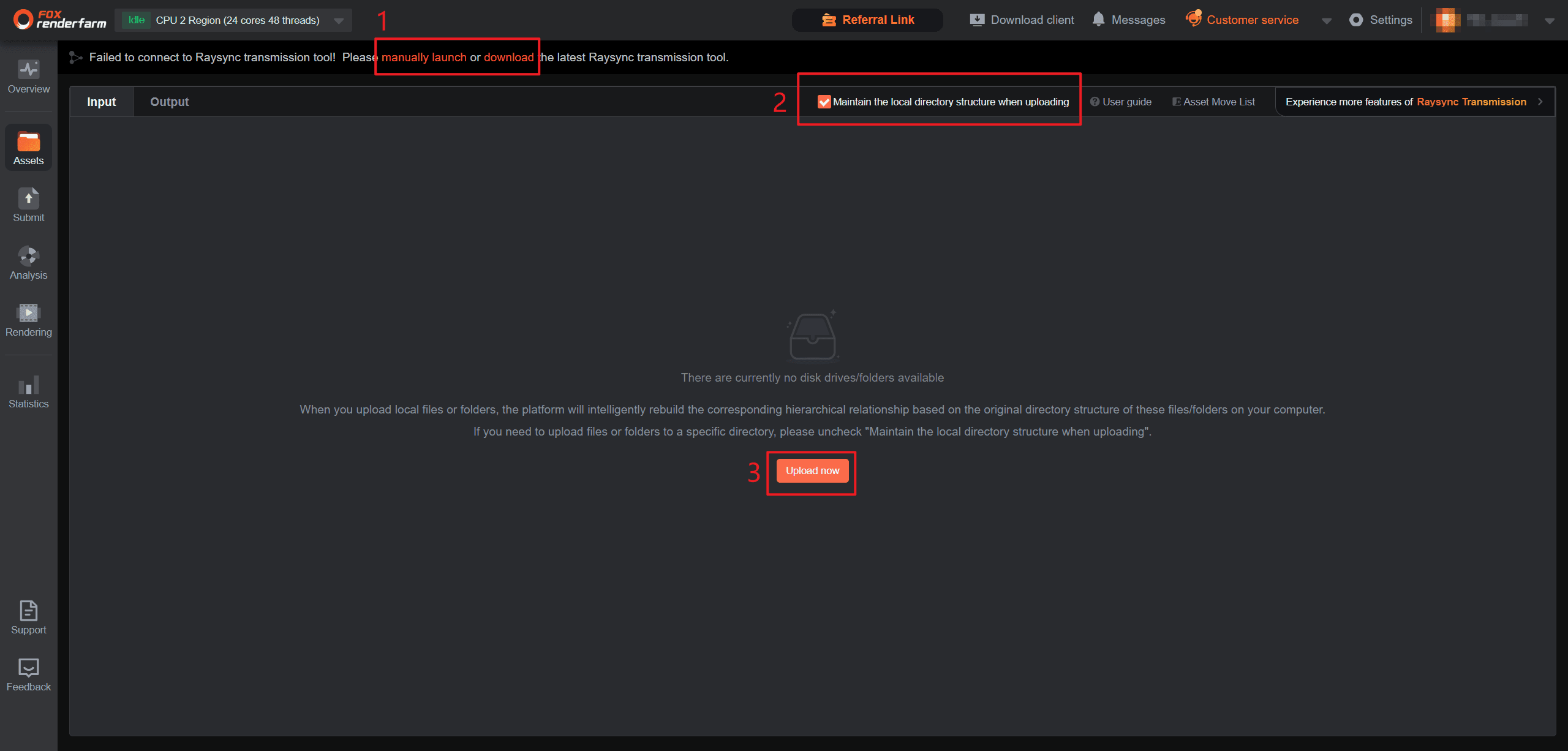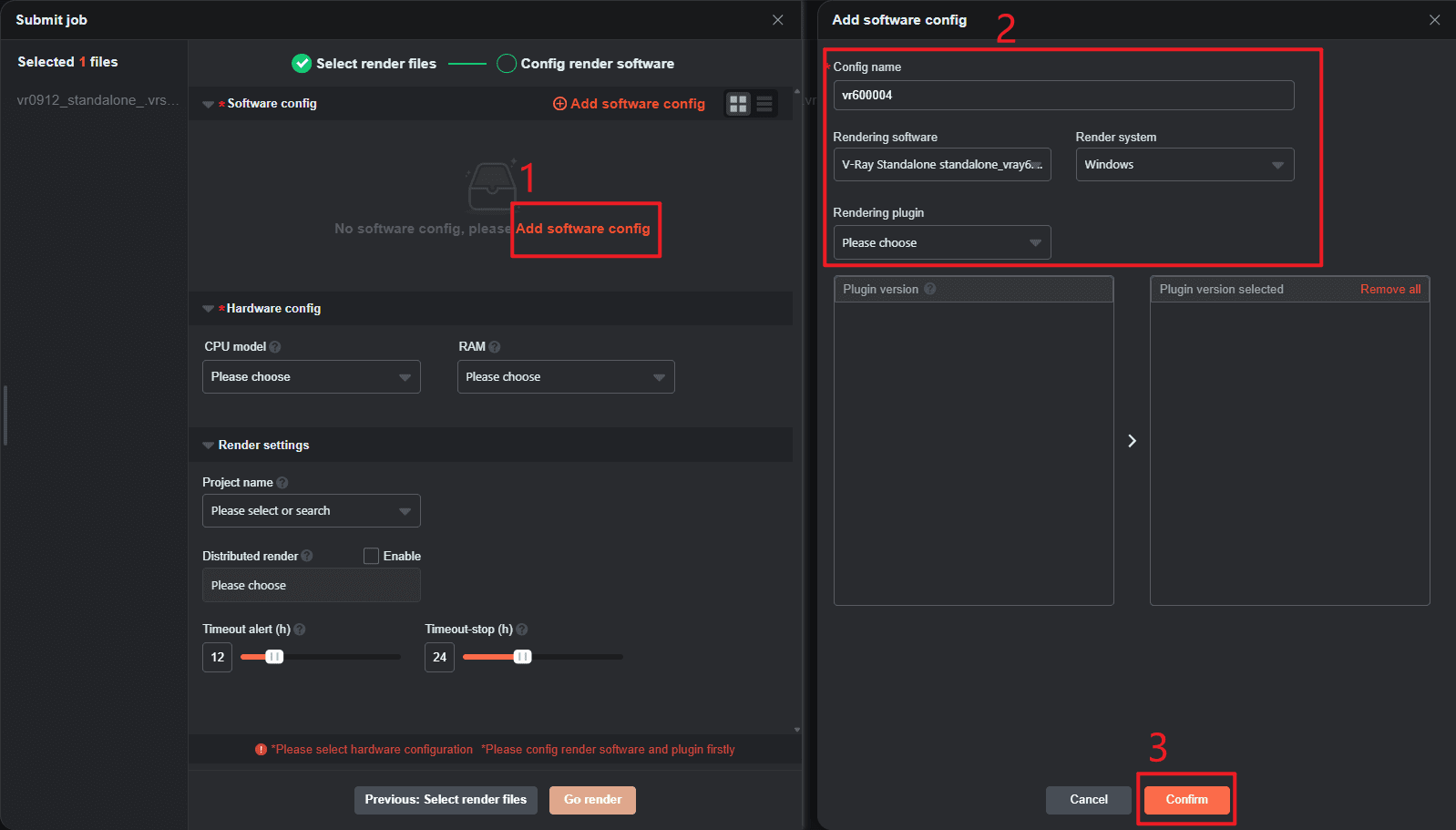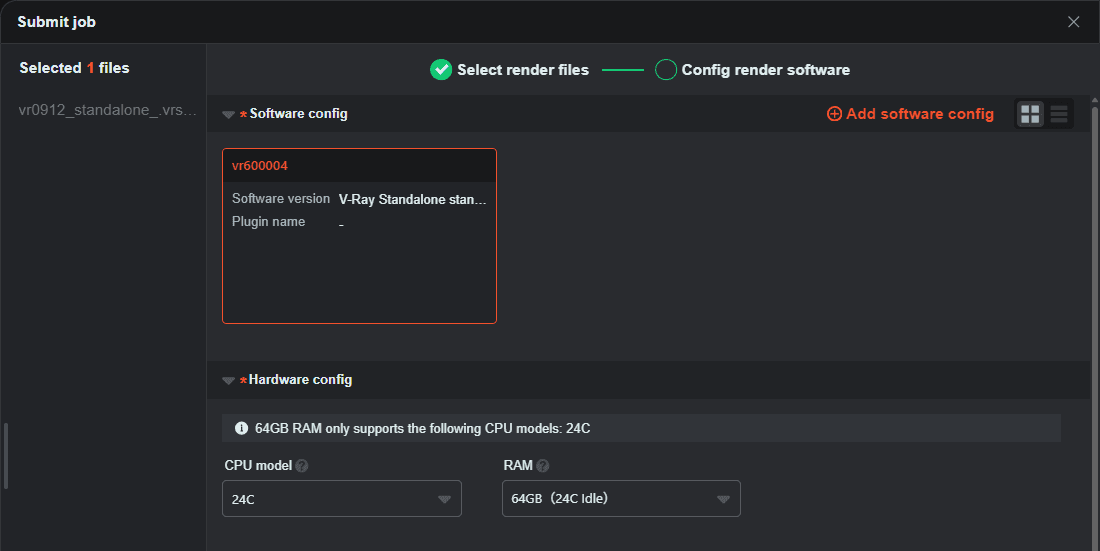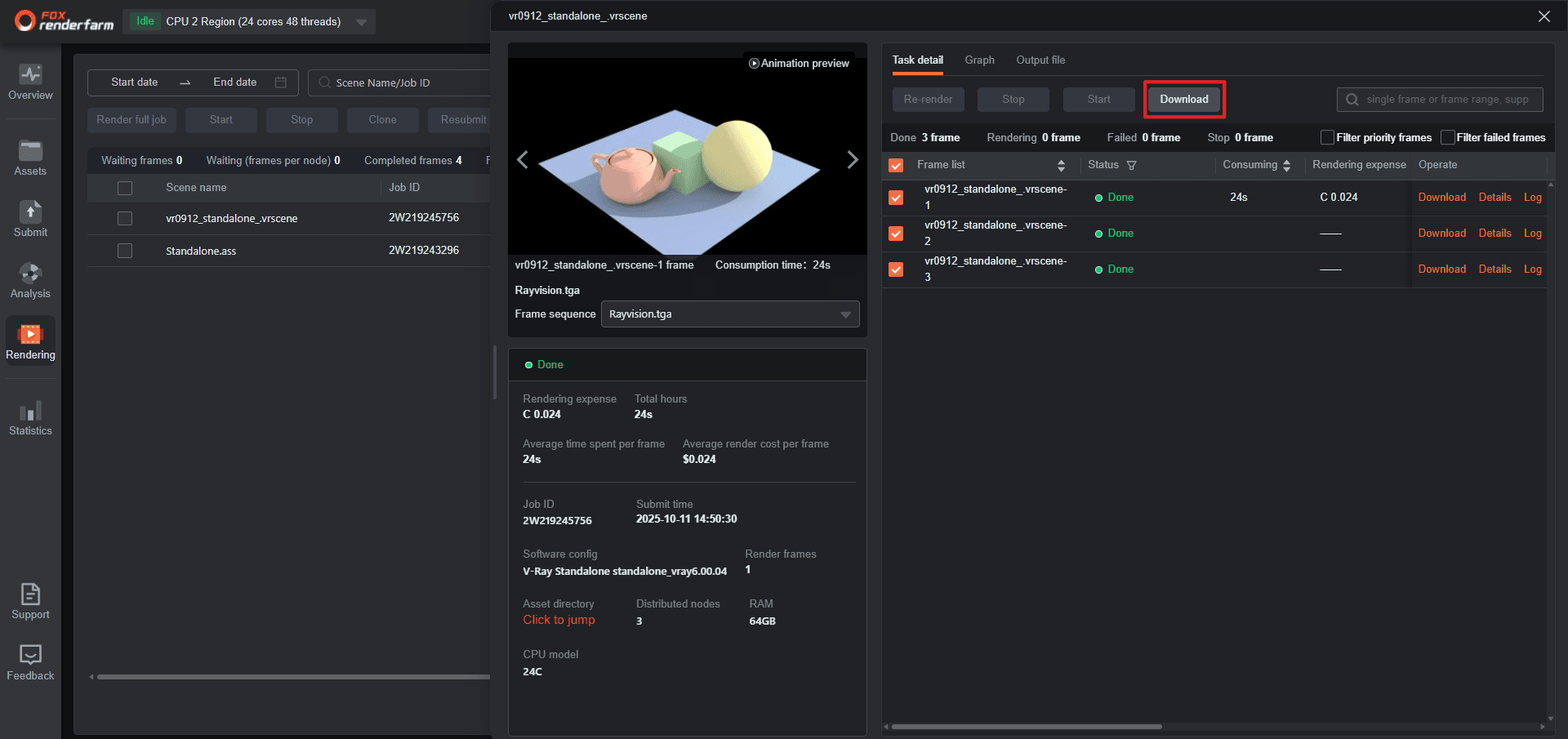
V-Ray Web Submission
The web submission process for V-Ray primarily consists of three steps:
1. Upload;
2. Submit;
3. Rendering and download.
In the following sections, we will provide a detailed description of each of these steps. Includes video tutorials and text description tutorials.
Video for V-Ray submission
Step 1: Upload
1. Upon logging into the web interface, navigate to the Assets page, then download and install the transfer tool. Once the installation is complete, click to launch the transfer tool.
2. Select the checkbox labelled "Maintain the local directory structure when uploading." If selected, the cloud will replicate the local directory structure, ensuring consistency between the cloud and local storage paths. If unchecked, you'll need to create folders in the cloud before uploading files;
Comparison of local and cloud asset catalogs:

3. Open the local folder containing your project files, select the project file you want to render, and click "Upload." (Note: Before uploading, please ensure you have modified and saved your rendering settings.)
4. Click the submit icon to enter the submission section.

Step 2: Submit
1.Proceed to the submission phase: first select the [V-Ray Standalone] software, then set the rendering project path and select the rendering scene file, and finally click [Next :Config render software ].

2. Proceed with software configuration. Click [Add Config] to add software and plugin configurations. In the configuration box, set up Config name, Rendering softwaare, Render system, and Plugin step by step.
If the required plugin information is not found, you can provide feedback to customer service for addition. After the settings are completed, click [Confirm].

3.1 Software config: Ensure that the selected software and plug-in configurations match your submit scenes.
3.2 Hardware config: Select an appropriate rendering machine per your requirements. The superior the configuration, the higher the rendering efficiency, enabling rapid completion of rendering tasks.
3.3 Render settings
Project name: You can create a new project or select an existing project name. Adding a project will facilitate subsequent project management and billing statistics;
Distributed render: Each frame task will be rendered simultaneously with multiple nodes

Timeout alert(h): An email alert will be sent if the rendering frame time exceeds the set limitation. The receiving email can be configured by yourself in Web->Message seetings->Job message settings;
Timeout alert(h): If the time - consuming of a rendering frame exceeds the set limitation, it will be automatically stopped and you will be informed via email. The receiving email can be configured by yourself in Web->Message seetings->Job message settings.

3.4 Click [Go render] to enter the rendering process directly.

Step 3: Rendering and download
1. During the rendering process, you can click on jobs to view rendering details;
2. After rendering is completed, go to the Task Details page, select the output files to be downloaded, and then start the download process.



